Pennsylvania Regiments at Petersburg and Richmond – Corps and Generals (Part 1 of 2)
Posted By Norman Gasbarro on October 14, 2012
In this, the first of two posts on the Pennsylvania regiments present during the Petersburg-Richmond Campaign, the “order of battle”, or the listing of how the Union Army was organized for battle, will begin. The listing will conclude tomorrow. Many men from the Lykens Valley area participated in the campaign around Richmond which was one of the longest, largest and most unique of the war and many stories have come out of this campaign – including the tunnel dug by Schuylkill County coal miners and the resulting Battle of the Crater.
The following summary is taken from Wikipedia, which also presents (in its own format), the “order of battle.”
The Richmond–Petersburg Campaign was a series of battles around Petersburg, Virginia, fought from June 9, 1864, to March 25, 1865,during the American Civil War. Although it is more popularly known as the Siege of Petersburg, it was not a classic military siege, in which a city is usually surrounded and all supply lines are cut off, nor was it strictly limited to actions against Petersburg. The campaign was nine months of trench warfare in which Union forces commanded by Lt.-Gen. Ulysses S. Grant assaulted Petersburg unsuccessfully and then constructed trench lines that eventually extended over 30 miles (48 km) from the eastern outskirts of Richmond, Virginia, to around the eastern and southern outskirts of Petersburg. Petersburg was crucial to the supply of Confederate Gen. Robert E. Lee‘s army and the Confederate capital of Richmond. Numerous raids were conducted and battles fought in attempts to cut off the railroad supply lines through Petersburg to Richmond, and many of these caused the lengthening of the trench lines, overloading dwindling Confederate resources.
Lee finally yielded to the overwhelming pressure—the point at which supply lines were finally cut and a true siege would have begun—and abandoned both cities in April 1865, leading to his retreat and surrender at Appomattox Court House. The Siege of Petersburg foreshadowed the trench warfare that was common in World War I, earning it a prominent position in military history. It also featured the war’s largest concentration of African American troops, who suffered heavy casualties at such engagements as the Battle of the Crater and Chaffin’s Farm.
The Wikipedia article on the Petersburg-Richmond Campaign also gives the Confederate “order of battle,” but for the readership of this blog, the primary interest is in locating the Pennsylvania regiments and determining how they participated in the battle. For those who seek an explanation of how the army was organized (army, corps, division, etc.) reference can be made to a prior post entitled Pennsylvania Regiments at Gettysburg – The Makeup of an Army, in which a chart is given showing these army components and how they fit together as a well-organized fighting force.
Most men were assigned to companies within regiments and they often referred to their company by the name of the captain. But companies were part of regiments and regiments were the way Pennsylvania (and other states) provided men for the war effort. Since the regiment was the primary organizational unit for most Pennsylvanians, they saw the war and reported on it from that perspective. When they applied for pensions, they did so by stating the regiment and company in which they served. But the larger battles and campaigns were not fought by individual regiments. The regiments were assigned to brigades; the brigades were assigned to divisions; the divisions were assigned to corps; and the corps were assigned to armies. The overall Union commander at Petersburg-Richmond was Lt.-Gen. Ulysses S. Grant and under his control were several armies. Pennsylvania regiments were components of each of the armies under Grant. This blog post (as well as its conclusion tomorrow) seeks to identify where each of these Pennsylvania regiments fit into the overall command structure.
Although the campaign took about nine months, the reference time for the following “order of battle” is 31 December 1864 and the primary information for this post comes from Volume IV of Battles and Leaders of the Civil War, pages 590-592. Where a general was “on leave” as of 31 December 1964, that is noted and only the active general is pictured. Pictures of generals are readily available on the web and nearly all are in the public domain. The pictures on this post are from Wikipedia unless otherwise specified.
If the word “None” appears after the designation of a brigade (or other organizational unit), there were no Pennsylvania regiments included in that brigade and it was composed of regiments from other states or of Regular Army components. Nearly all the brigades were composed of mixed-state regiments, so the naming of one or more Pennsylvania regiments as part of a brigade does not mean that other-state regiments did not also serve in that brigade. To find the other-state regiments that served alongside the Pennsylvania regiments, either refer to the Wikipedia article or the the print article in Battles and Leaders of the Civil War (cited above).
Hopefully, this blog post will be helpful to those writing family histories in that the name of the general at the rank closest to the men of the regiment can easily be identified by finding the regiment in the listing. Biographies of many of the generals are available on-line through Wikipedia with references given at the end of each Wikipedia article. These biographies almost almost indicate where the generals were from (many had some connection to Pennsylvania) as well as giving some information about their competency and the careers they had before and after the war.
It is possible that there are errors in the listing, and, as always, comments are welcome – or send an e-mail directly to the blog (click here).
———————————
THE UNION ARMY
THE UNION ARMY – Lt.-Gen. Ulysses S. Grant, Commanding
******************************************************************************************
ARMY OF THE POTOMAC

John G. Parke
ARMY OF THE POTOMAC – Maj.-Gen. George G. Meade (on leave); Maj.-Gen. John G. Parke
———————————
Marsena R. Patrick
Provost Guard- Brig.-Gen. Marsena R. Patrick: 3rd Pennsylvania Cavalry (8 companies); 68th Pennsylvania Infantry; 114th Pennsylvania Infantry.
———————————
Henry W. Benham
Engineer Brigade & Defenses of City Point – Brig.-Gen. Henry W. Benham: None
——————————–

Henry J. Hunt
Artillery – Brig.-Gen. Henry J. Hunt: None
************************************************************************************************
SECOND ARMY CORPS
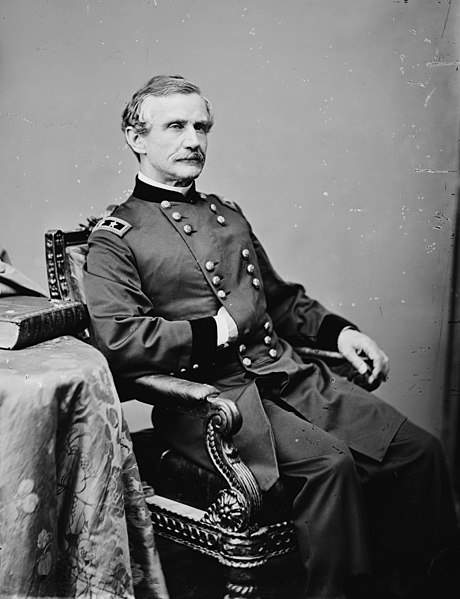
Andrew A. Humphries
SECOND ARMY CORPS – Maj.-Gen Andrew A. Humphreys
———————————

Nelson A. Miles
FIRST DIVISION – Brig.-Gen. Nelson A. Miles
First Brigade: 81st Pennsylvania Infantry; 140th Pennsylvania Infantry; 183rd Pennsylvania Infantry.
Second Brigade: None
Third Brigade: None
Fourth Brigade: 53rd Pennsylvania Infantry; 116th Pennsylvania Infantry; 145th Pennsylvania Infantry; 148th Pennsylvania Infantry.
——————————
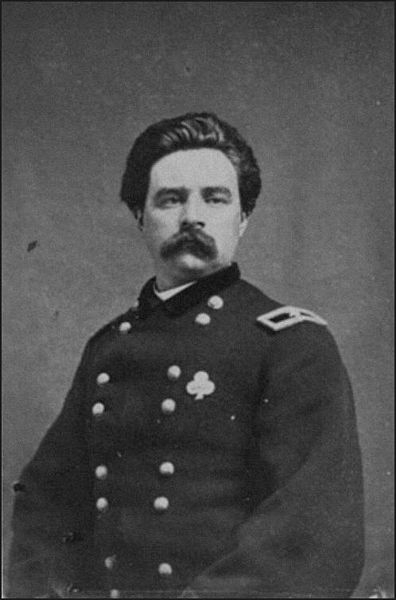
Thomas A. Smyth
SECOND DIVISION – Maj.-Gen. John Gibbon (on leave); Brig.-Gen. Thomas A. Smyth
First Brigade: 184th Pennsylvania Infantry.
Second Brigade: None.
Third Brigade: 69th Pennsylvania Infantry; 106th Pennsylvania Infantry (battalion).
——————————–

Gershom Mott
THIRD DIVISION – Brig.-Gen. Gershom Mott
First Brigade: 99th Pennsylvania Infantry; 110th Pennsylvania Infantry.
Second Brigade: 57th Pennsylvania Infantry; 84th Pennsylvania Infantry (4 companies); 105th Pennsylvania Infantry; 141st Pennsylvania Infantry.
Third Brigade: None
Artillery Brigade: 1st Pennsylvania Artillery, Battery F.
************************************************************************************************
FIFTH ARMY CORPS

Gouverneur K. Warren
FIFTH ARMY CORPS – Maj.-Gen. Gouverneur K. Warren
Escort: 4th Pennsylvania Cavalry (detachment).
Provost Guard: None
——————————–

Joseph J. Bartlett
FIRST DIVISION – Brig.-Gen Charles Griffin (on leave); Brig.-Gen. Joseph J. Bartlett

Joshua L Chamberlain
First Brigade – Brig.-Gen. Joshua L. Chamberlain: 198th Pennsylvania Infantry.
Second Brigade: None.
Third Brigade: 83rd Pennsylvania Infantry (6 companies); 91st Pennsylvania Infantry; 118th Pennsylvania Infantry; 155th Pennsylvania Infantry.
——————————–
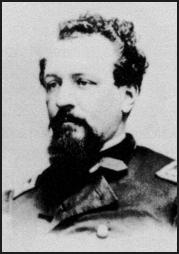
Romeyn B. Ayres
SECOND DIVISION – Brig.-Gen. Romeyn B. Ayres (on leave); Col. James Gwyn.
First Brigade: None.
Second Brigade: None.
Third Brigade: 157th Pennsylvania Infantry (4 companies); 190th Pennsylvania Infantry; 191st Pennsylvania Infantry; 210th Pennsylvania Infantry.
———————————
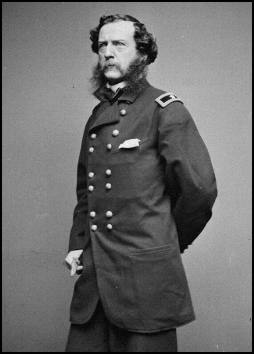
Samuel W. Crawford
THIRD DIVISION – Brig.-Gen. Samuel W. Crawford.
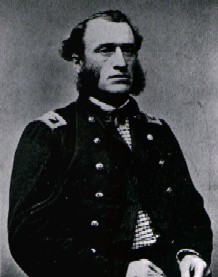
Henry A. Morrow
First Brigade – Brig.-Gen. Edward S. Bragg (on leave); Col. Henry A. Morrow: 143rd Pennsylvania Infantry; 149th Pennsylvania Infantry; 150th Pennsylvania Infantry.
Second Brigade – Brig.-Gen. Henry Baxter: 11th Pennsylvania Infantry; 88th Pennsylvania Infantry; 107th Pennsylvania Infantry.
Third Brigade: 56th Pennsylvania Infantry; 121st Pennsylvania Infantry; 142nd Pennsylvania Infantry.
Artillery Brigade: 1st Pennsylvania Artillery, Battery B.
——————————–
SIXTH ARMY CORPS

Horatio G. Wright
SIXTH ARMY CORPS – Maj.-Gen. Horatio G. Wright.
——————————–

Frank Wheaton
FIRST DIVISION – Brig.-Gen. Frank Wheaton
First Brigade: None
Ranald S. Mackenzie
Second Brigade – Brig.-Gen. Ranald S. Mackenzie: 95th Pennsylvania Infantry (6 companies).
Third Brigade: 49th Pennsylvania Infantry; 82nd Pennsylvania Infantry; 119th Pennsylvania Infantry.
———————————

Lewis A. Grant
SECOND DIVISION – Brig-Gen. George W. Getty (on leave); Brig.-Gen. Lewis A. Grant
First Brigade: 93rd Pennsylvania Infantry; 98th Pennsylvania Infantry; 102nd Pennsylvania Infantry; 139th Pennsylvania Infantry.
Second Brigade: None.
Third Brigade: None.
———————————-

Truman A. Seymour
THIRD DIVISION – Brig.-Gen. Truman Seymour.
First Brigade: 87th Pennsylvania Infantry (5 companies).
Second Brigade: 67th Pennsylvania Infantry; 138th Pennsylvania Infantry.
Artillery Brigade: None.
——————————–
This post continues tomorrow with the NINTH ARMY CORPS.
 ;
;
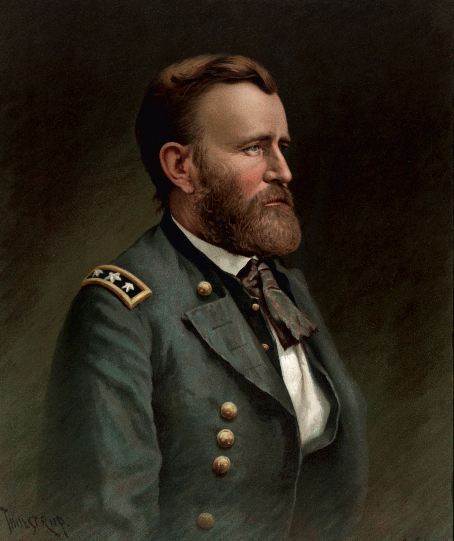


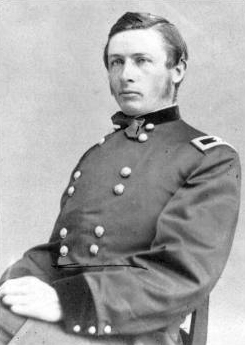


Comments